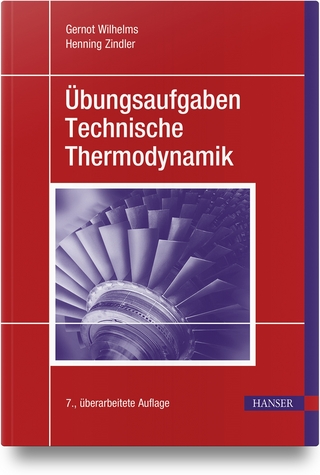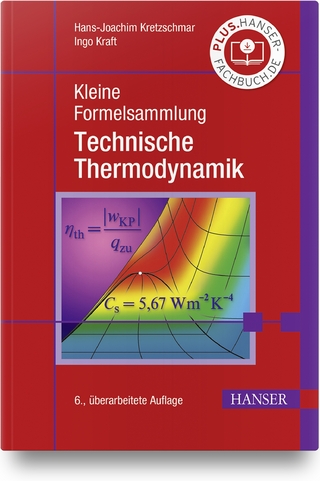
Entropy, Large Deviations, and Statistical Mechanics
Springer-Verlag New York Inc.
978-0-387-96052-4 (ISBN)
- Titel ist leider vergriffen;
keine Neuauflage - Artikel merken
We will treat a large class of stochastic systems which involve both indepen- dent and dependent random variables and which have the following features: probabilities converge to zero exponentially fast as the size of the system increases; the exponential decay leads to strong convergence properties of the system. The most fascinating aspect of the theory is that the exponential decay rates are computable in terms of entropy functions. This identification between entropy and decay rates of large deviation probabilities enhances the theory significantly.
I: Large Deviations and Statistical Mechanics.- I. Introduction to Large Deviations.- I.1. Overview.- I.2. Large Deviations for I.I.D. Random Variables with a Finite State Space.- I.3. Levels-1 and 2 for Coin Tossing.- I.4. Levels-1 and 2 for I.I.D. Random Variables with a Finite State Space.- I.S. Level-3: Empirical Pair Measure.- I.6. Level-3: Empirical Process.- I.7. Notes.- I.B. Problems.- II. Large Deviation Property and Asymptotics of Integrals.- II.1. Introduction.- II.2. Levels-1, 2, and 3 Large Deviations for I.I.D. Random Vectors.- II.3. The Definition of Large Deviation Property.- II.4. Statement of Large Deviation Properties for Levels-1, 2, and 3.- II.5. Contraction Principles.- II.6. Large Deviation Property for Random Vectors and Exponential Convergence.- II.7. Varadhan's Theorem on the Asymptotics of Integrals.- II.8. Notes.- II.9. Problems.- III. Large Deviations and the Discrete Ideal Gas.- III.1. Introduction.- III.2. Physics Prelude: Thermodynamics.- III.3. The Discrete Ideal Gas and the Microcanonical Ensemble.- III.4. Thermodynamic Limit, Exponential Convergence, and Equilibrium Values.- III.5. The Maxwell-Boltzmann Distribution and Temperature.- III.6. The Canonical Ensemble and Its Equivalence with the Microcanonical Ensemble.- III.7. A Derivation of a Thermodynamic Equation.- III.8. The Gibbs Variational Formula and Principle.- III.9. Notes.- III.10. Problems.- IV. Ferromagnetic Models on ?.- IV.1. Introduction.- IV.2. An Overview of Ferromagnetic Models.- IV.3. Finite-Volume Gibbs States on ?.- IV.4. Spontaneous Magnetization for the Curie-Weiss Model.- IV.5. Spontaneous Magnetization for General Ferromagnets on ?.- IV.6. Infinite-Volume Gibbs States and Phase Transitions.- IV.7. The Gibbs Variational Formula and Principle.- IV.8. Notes.- IV.9. Problems.- V. Magnetic Models on ?D and on the Circle.- V.1. Introduction.- V.2. Finite-Volume Gibbs States on ?D, D ? 1.- V.3. Moment Inequalities.- V.4. Properties of the Magnetization and the Gibbs Free Energy.- V.5. Spontaneous Magnetization on ?D, D ? 2, Via the Peierls Argument.- V.6. Infinite-Volume Gibbs States and Phase Transitions.- V.7. Infinite-Volume Gibbs States and the Central Limit Theorem.- V.8. Critical Phenomena and the Breakdown of the Central Limit Theorem.- V.9. Three Faces of the Curie-Weiss Model.- V.10. The Circle Model and Random Waves.- V.11. A Postscript on Magnetic Models.- V.12. Notes.- V.13. Problems.- II: Convexity and Proofs of Large Deviation Theorems.- VI. Convex Functions and the Legendre-Fenchel Transform.- VI.1. Introduction.- VI.2. Basic Definitions.- VI.3. Properties of Convex Functions.- VI.4. A One-Dimensional Example of the Legendre-Fenchel Transform.- VI.5. The Legendre-Fenchel Transform for Convex Functions on ?d.- VI.6. Notes.- VI.7. Problems.- VII. Large Deviations for Random Vectors.- VII.1. Statement of Results.- VII.2. Properties of IW.- VII.3. Proof of the Large Deviation Bounds for d = 1.- VII.4. Proof of the Large Deviation Bounds for d ? 1.- VII.5. Level-1 Large Deviations for I.I.D. Random Vectors.- VII.6. Exponential Convergence and Proof of Theorem II.6.3.- VII.7. Notes.- VII.8. Problems.- VIII. Level-2 Large Deviations for I.I.D. Random Vectors.- VIII.1. Introduction.- VIII.2. The Level-2 Large Deviation Theorem.- VIII.3. The Contraction Principle Relating Levels-1 and 2 (d = 1).- VIII.4. The Contraction Principle Relating Levels-1 and 2 (d ? 2).- VIII.5. Notes.- VIII.6. Problems.- IX. Level-3 Large Deviations for I.I.D. Random Vectors.- IX.1. Statement of Results.- IX.2. Properties of the Level-3 Entropy Function.- IX.3. Contraction Principles.- IX.4. Proof of the Level-3 Large Deviation Bounds.- IX.5. Notes.- IX.6. Problems.- Appendices.- Appendix A: Probability.- A.1. Introduction.- A.2. Measurability.- A.3. Product Spaces.- A.4. Probability Measures and Expectation.- A.S. Convergence of Random Vectors.- A.6. Conditional Expectation, Conditional Probability, and Regular Conditional Distribution.- A.7. The Kolmogorov Existence Theorem.- A.8. Weak Convergence of Probability Measures on a Metric Space.- Appendix B: Proofs of Two Theorems in Section II.7.- B.1. Proof of Theorem II.7.1.- B.2. Proof of Theorem II.7.2.- Appendix C: Equivalent Notions of Infinite-Volume Measures for Spin Systems.- C.1. Introduction.- C.2. Two-Body Interactions and Infinite-Volume Gibbs States.- C.3. Many-Body Interactions and Infinite-Volume Gibbs States.- C.4. DLR States.- C.5. The Gibbs Variational Formula and Principle.- C.6. Solution of the Gibbs Variational Formula for Finite-Range Interactions on ?.- Appendix D: Existence of the Specific Gibbs Free Energy.- D.1. Existence Along Hypercubes.- D.2. An Extension.- List of Frequently Used Symbols.- References.- Author Index.
| Reihe/Serie | Die Grundlehren der Mathematischen Wissenschaften ; 271 |
|---|---|
| Zusatzinfo | biography |
| Verlagsort | New York, NY |
| Sprache | englisch |
| Maße | 165 x 248 mm |
| Gewicht | 685 g |
| Themenwelt | Naturwissenschaften ► Physik / Astronomie ► Thermodynamik |
| ISBN-10 | 0-387-96052-X / 038796052X |
| ISBN-13 | 978-0-387-96052-4 / 9780387960524 |
| Zustand | Neuware |
| Haben Sie eine Frage zum Produkt? |
aus dem Bereich


